Ancient Indian folk painting and art styles have been passed down for generations and are still practiced in numerous parts of the world today. India has long been renowned for displaying ethnic and traditional vibrancy through its conventional arts and crafts. The country’s 35 states each have their own distinct cultural and traditional characteristics, which are articulated through different forms of art. Folk art in India has a high international market potential due to its conventional aesthetic sensibility and authenticity. This creativity is not restricted to paintings, but also includes other art forms such as pottery, home decorations, ornaments and clothes-making.
Regional dances of India such as the Punjabi Bhangra, Gujarati Dandiya, and Assamese Bihu, project the cultural heritage of their respective regions and are solid candidates in the field of Indian folk art. Individuals perform these folk dances to show their joy at special occasions such as the birth of a child, weddings, festivals, etc. Indian folk art often portrays sacred stories of God and Goddesses, each distinctive and heroic in their own way. Historically, artwork was created on canvases or clothing using natural dyes and colors, made of soil, mud, leaves and charcoal, creating a feeling of antiquity and nostalgia.
Folk art has a conceptual significance that is connected to the materials and techniques used to produce it. Indian folk art includes dazzling sculptures and paintings of Hindu mythological deities, which are often sold and exhibited in temples, fairs, festivals, and city districts. It also serves as a means of self-expression for communities of nomadic tribes and ethnic groups throughout the world. The related art forms express the ephemeral and complex trends of lifestyles that communities have encountered when moving through India. Throughout Indian culture, numerous folk art forms have been safeguarded by religious and ethnic practices based on family values and everyday life. However, globalization has culminated in the creation of a contemporary macro-culture, which has resulted in the slow disappearance of Indian folk-art. As a result, enormous efforts have been made by the Government of India, in cooperation with various NGOs, to conserve, protect and promote these arts.
Mithila art (also known as Madhubani painting) is a traditional Indian folk art that originated in Nepal’s Janak kingdom, now known as Bihar. Mithila art was mainly produced by women who desired to be one with God. The paintings are produced using mineral pigments that artists have prepared and are usually painted on fresh mud walls. Mithila art is made using a combination of tools such as fingers, twigs, brushes, and matchsticks. This art style was unknown to the rest of the world until the British discovered it after an earthquake in the 1930s that exposed damaged houses with Mithila paintings. Mithila art is well-known for its tribal motifs and use of vibrant earthy colors.
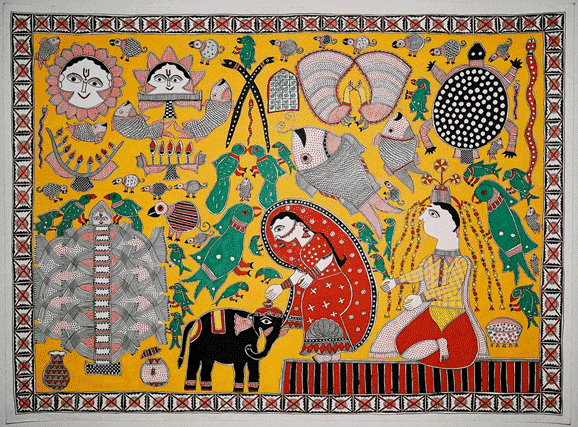
Warli Folk Painting is one of India’s oldest art styles, originating with the Warli tribe on Mumbai’s northern outskirts. Warli Art was discovered in the early 1970s, but its roots can be traced back to the 10th century A.D. Warli is a lively expression of the Warli community’s everyday social affairs, and is used by the Warli people to decorate the walls of village houses. It incorporates the use of circles, triangles, and squares to create a variety of shapes that represent everyday activities such as fishing, hunting, festivals, dance, and more. The paintings are all done on a red ochre or dark background, with the forms outlined in white using grounded rice. The Warli paintings that represent Palghat, the marriage deity, often include a horse used by the bride and groom. The painting is sacred to the Warli tribe and without it, a wedding cannot take place. Warli art serves the local people’s social and religious interests, and it is often believed that these works evoke powers of the Gods.
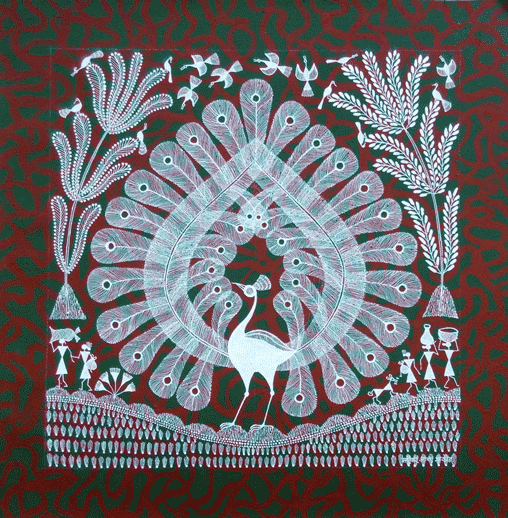
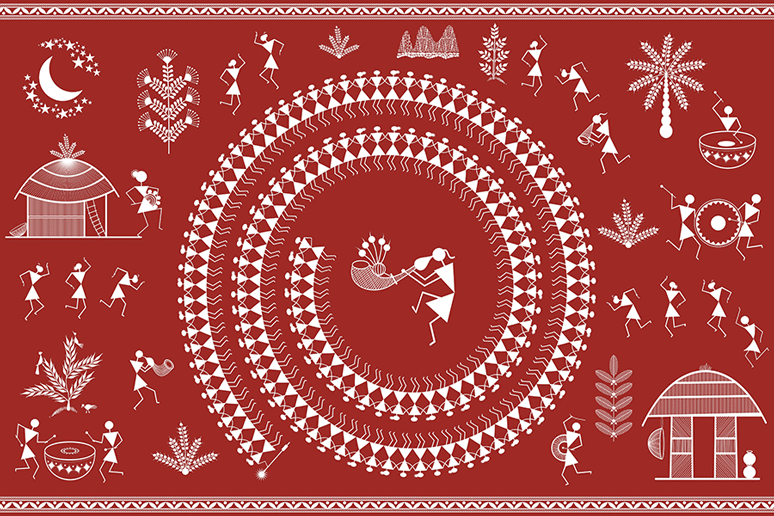
Pattachitra is a folk art form that emerged in eastern India, Odisha, and West Bengal. It is one of India’s oldest and most popular art forms. These paintings feature sharp, geometric, and bold lines that often represent Indian mythology, Gods, and Goddesses. Pattachitra is produced on canvas and features vibrant colors, artistic motifs and designs. Thia Badhia, the depiction of the temple of Jannath; Dasabatara Patti, the ten incarnations of Lord Visnu; and Panchamukhi, the depiction of Lord Ganesh as a five-headed deity are some of the common themes depicted by this art form. These themes are evidently the heart of the art style. As a result, it is no surprise that the process of preparing the paintings necessitates undivided attention and meticulous craftsmanship. The Pattachitra paintings are a disciplined art that uses colors and patterns in a strict manner. Its distinct style also revealed a strong influence on the Mughal period, particularly the dress styles depicted in the paintings.
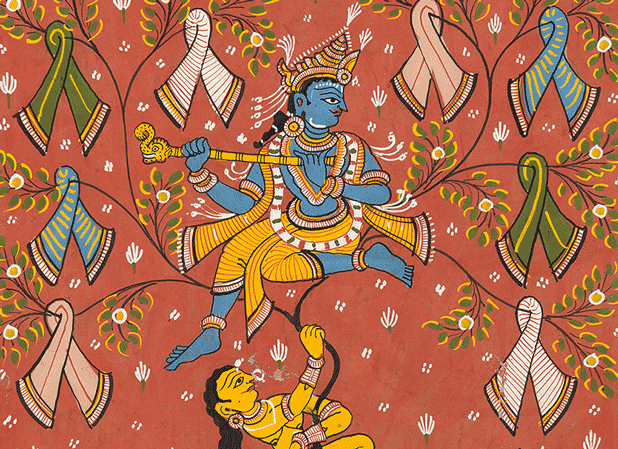
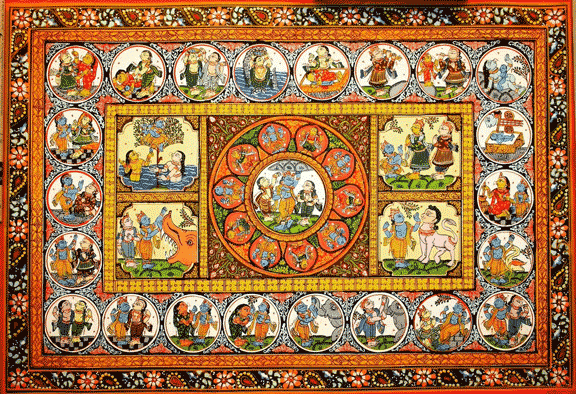
Kalamzhuthu is a form of Indian folk art that is well-known throughout the country. The Rangoli and Kolam are common variants to Kalamezhuthu that are drawn at the doorstep and courtyard to welcome a deity into the home. This art form is a fusion of Aryan, Dravidian, and tribal practices. Kalamezhuthu is a ritualistic art form practiced in Kerala temples and sacred gardens in which representations of deities are displayed on the floor. The art necessitates minute details, dimensions, and color selection that must be made in accordance with strict guidelines. It is done with natural pigments and powders, normally in five different shades. All of the powders and pigments are derived from plants: rice powder for white, burnt husk for black, turmeric for yellow, a lime-turmeric blend for blend, and leaves for green. The drawing of the Kalamezhuthu begins at a predetermined time and is immediately erased after the ceremonies associated with it are completed.
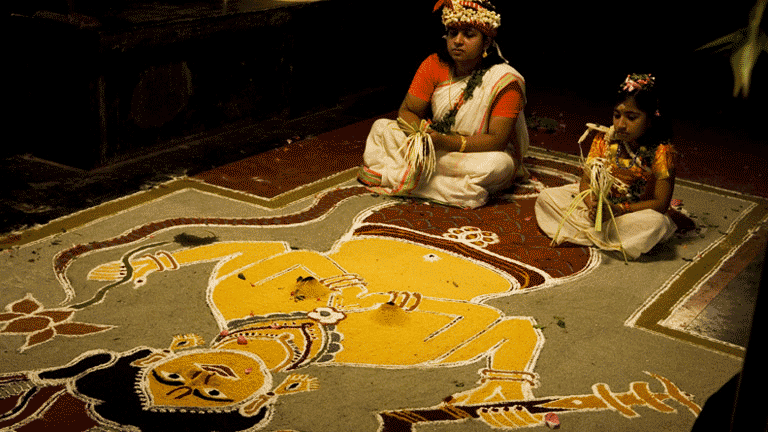
The complexities of these distinctive and vivid art forms are continuously practiced in different parts of the country and the world, influencing various contemporary art forms. The artistic resonances of Indian folk art are still alive and well, drawing people from all over India together to celebrate their cultural diversity.
